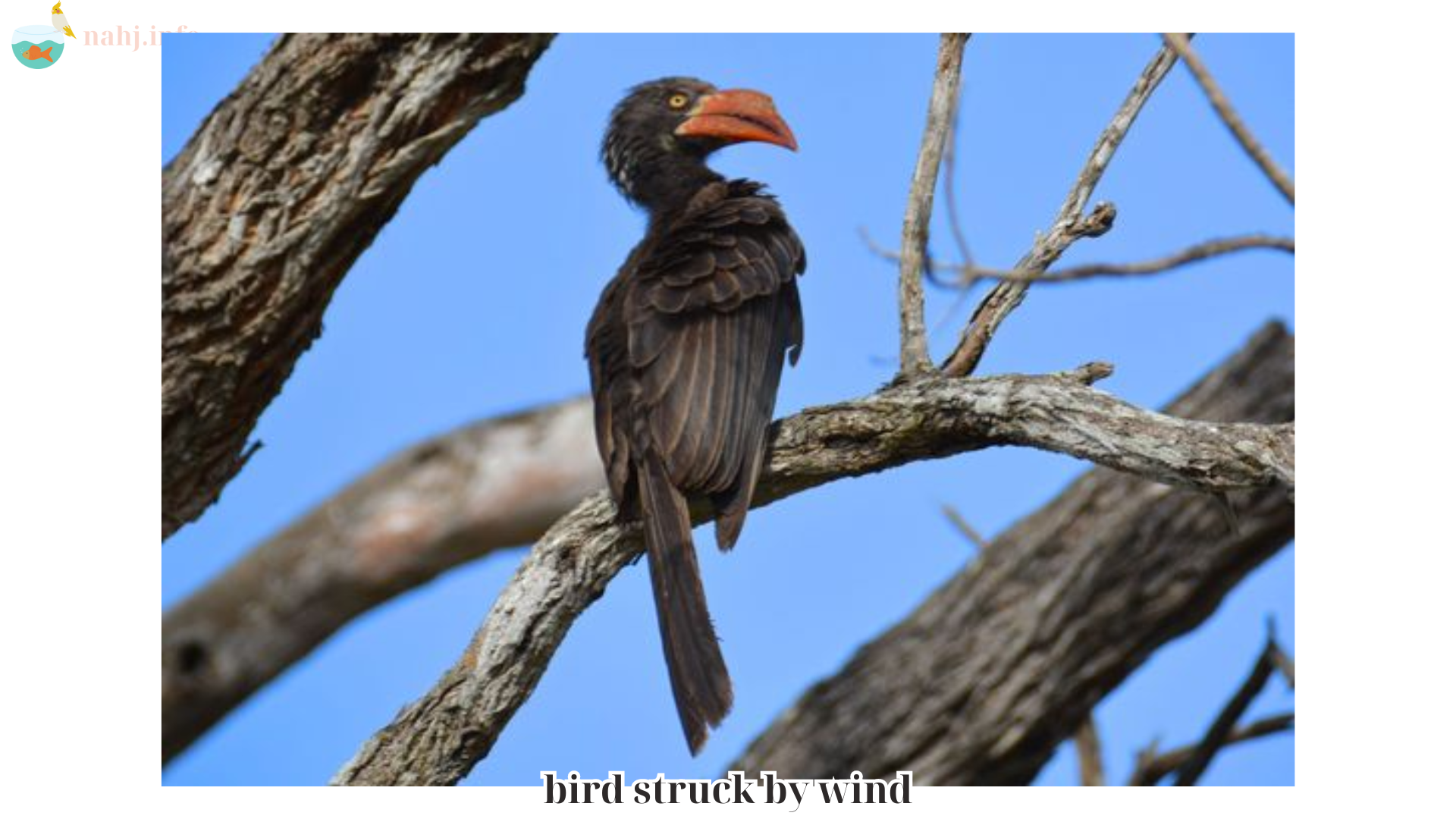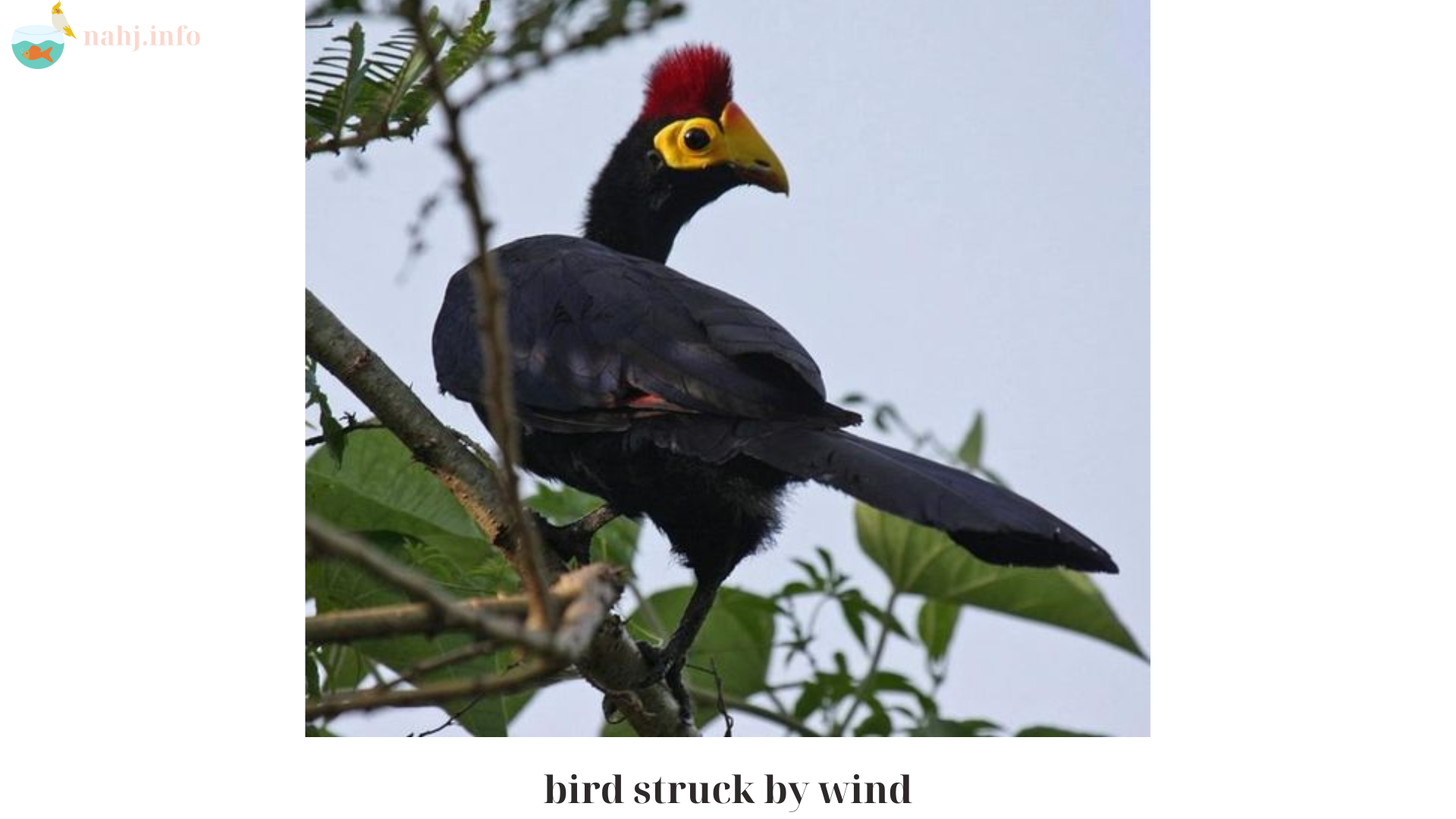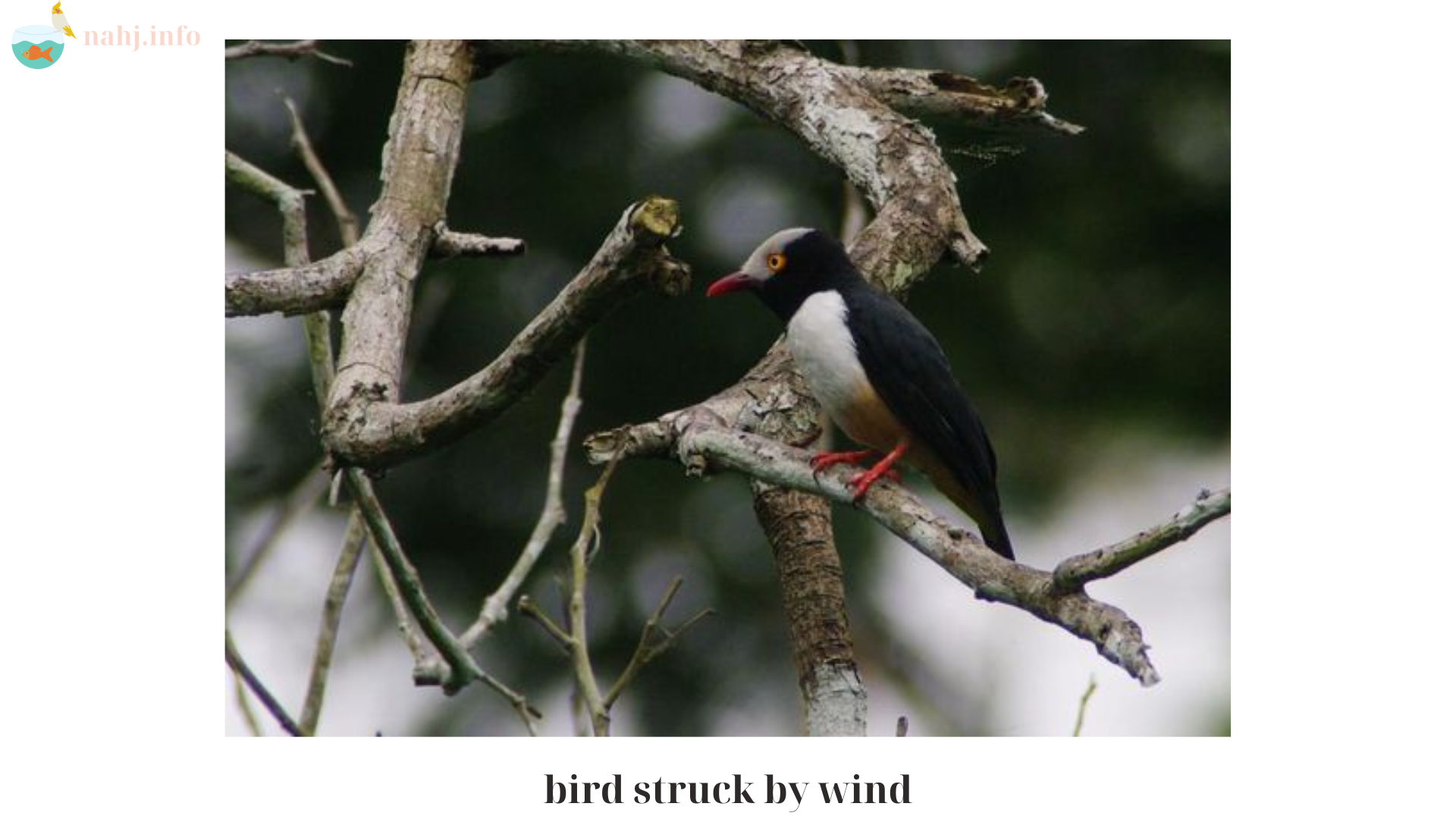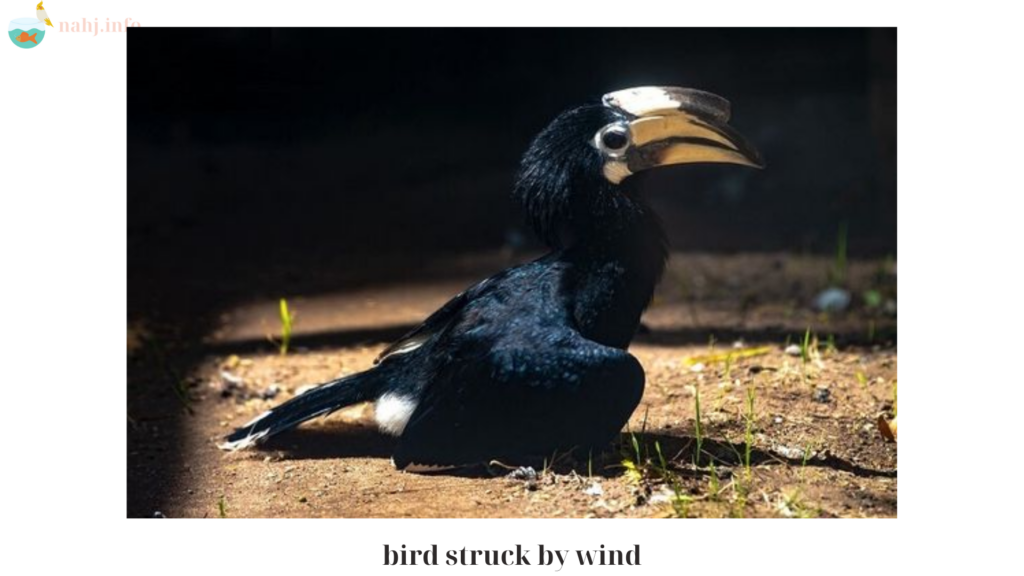When a bird is struck by wind, it can experience a range of effects, from disorientation and exhaustion to severe injury. As a responsible bird lover or someone who simply wants to help, understanding what happens when a bird is struck by wind, the potential consequences, and the best ways to assist can make a significant difference. This article by Nahj delves into the challenges faced by birds caught in strong winds and provides practical steps you can take to help.
Table of Contents
ToggleBird Struck by Wind: Understanding the Impact and How to Help

Disorientation and Exhaustion
Birds rely heavily on their sense of direction and natural navigation skills to travel. Strong winds can easily disorient them, pushing them off course and causing confusion. This disorientation can lead to exhaustion as birds struggle to regain their bearings and find a safe place to rest.
Physical Injuries
High winds can cause birds to collide with obstacles such as buildings, trees, and power lines. These collisions can result in a variety of injuries, including broken wings, legs, or internal injuries. Smaller birds are especially vulnerable due to their lighter weight and less robust structure.
Habitat Displacement
Strong winds can destroy or disrupt natural habitats, making it difficult for birds to find food and shelter. This displacement can be particularly challenging during breeding seasons when birds need stable environments to raise their young.
How to Help a Bird Struck by Wind

Immediate Response
If you find a bird that appears to be struck by wind, follow these steps to provide immediate assistance:
- Approach Carefully: Move slowly and calmly to avoid startling the bird further.
- Gently Pick Up the Bird: Use a soft cloth or towel to gently pick up the bird, being careful not to squeeze too tightly.
- Check for Injuries: Look for obvious signs of injury such as bleeding, broken wings, or difficulty breathing.
Providing a Safe Environment
Create a safe and quiet environment for the bird to recover:
- Place in a Box: Use a well-ventilated box lined with soft materials like cloth or paper towels. This will help keep the bird warm and comfortable.
- Keep Warm: Birds can become easily chilled when they are stressed or injured. Place the box in a warm, quiet area away from drafts.
- Minimize Stress: Keep the box covered and in a dark place to reduce stress and allow the bird to calm down.
Hydration and Nutrition
Hydration is crucial for an injured bird’s recovery:
- Provide Water: Offer a small dish of water that is shallow enough for the bird to drink from without the risk of drowning. You can also use an eyedropper to gently offer water if the bird is too weak to drink on its own.
- Food: If the bird is alert and willing to eat, offer small amounts of appropriate food such as birdseed, mealworms, or finely chopped fruits.
Seeking Professional Help
If the bird is seriously injured or not showing signs of improvement, it is essential to seek help from a professional:
- Contact a Wildlife Rehabilitator: Locate a local wildlife rehabilitator who has the expertise and facilities to care for injured birds.
- Veterinarian Assistance: If a wildlife rehabilitator is not available, contact a veterinarian who specializes in avian care.
Preventive Measures to Protect Birds from Wind-Related Injuries

Bird-Friendly Landscaping
Creating a bird-friendly environment in your yard can help protect birds from the effects of strong winds:
- Plant Native Trees and Shrubs: Native plants provide natural shelter and food sources for birds, reducing the need for them to travel long distances.
- Install Birdhouses and Shelters: Provide safe places for birds to rest and seek refuge during storms and high winds.
Window and Building Safety
Collisions with windows and buildings are common during strong winds:
- Install Window Decals: Use decals or bird tape to make windows more visible to birds and prevent collisions.
- Lights Out Program: Encourage turning off unnecessary lights during migratory seasons to reduce disorientation caused by artificial lighting.
Monitoring Weather Conditions
Being aware of upcoming weather conditions can help you take proactive steps to protect birds:
- Monitor Weather Reports: Stay informed about weather forecasts, especially during migration periods.
- Provide Shelter: During forecasts of strong winds, ensure that bird feeders and birdhouses are secure and provide additional shelter options.
Educating the Community
Raising awareness about the impact of strong winds on birds and how to help can make a significant difference:
- Community Workshops: Organize workshops to educate your community about bird safety and how to assist injured birds.
- Social Media Campaigns: Use social media platforms to share information and tips on protecting and helping birds during adverse weather conditions.
Conclusion
When a bird is struck by wind, it faces numerous challenges, from disorientation and exhaustion to serious injury. By understanding the impact of strong winds on birds and knowing how to provide immediate assistance, we can help these beautiful creatures recover and thrive. Creating a bird-friendly environment, taking preventive measures, and educating the community are essential steps in protecting birds from the dangers of strong winds. Through collective efforts, we can ensure a safer world for our feathered friends.

